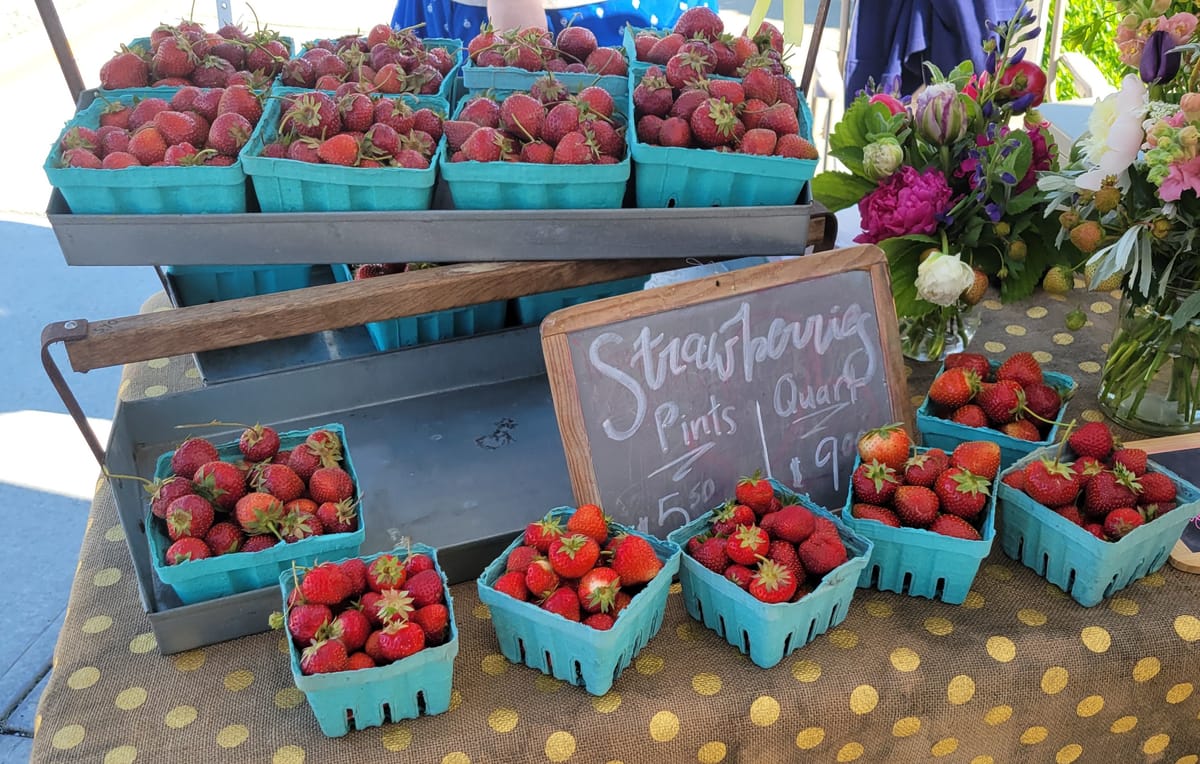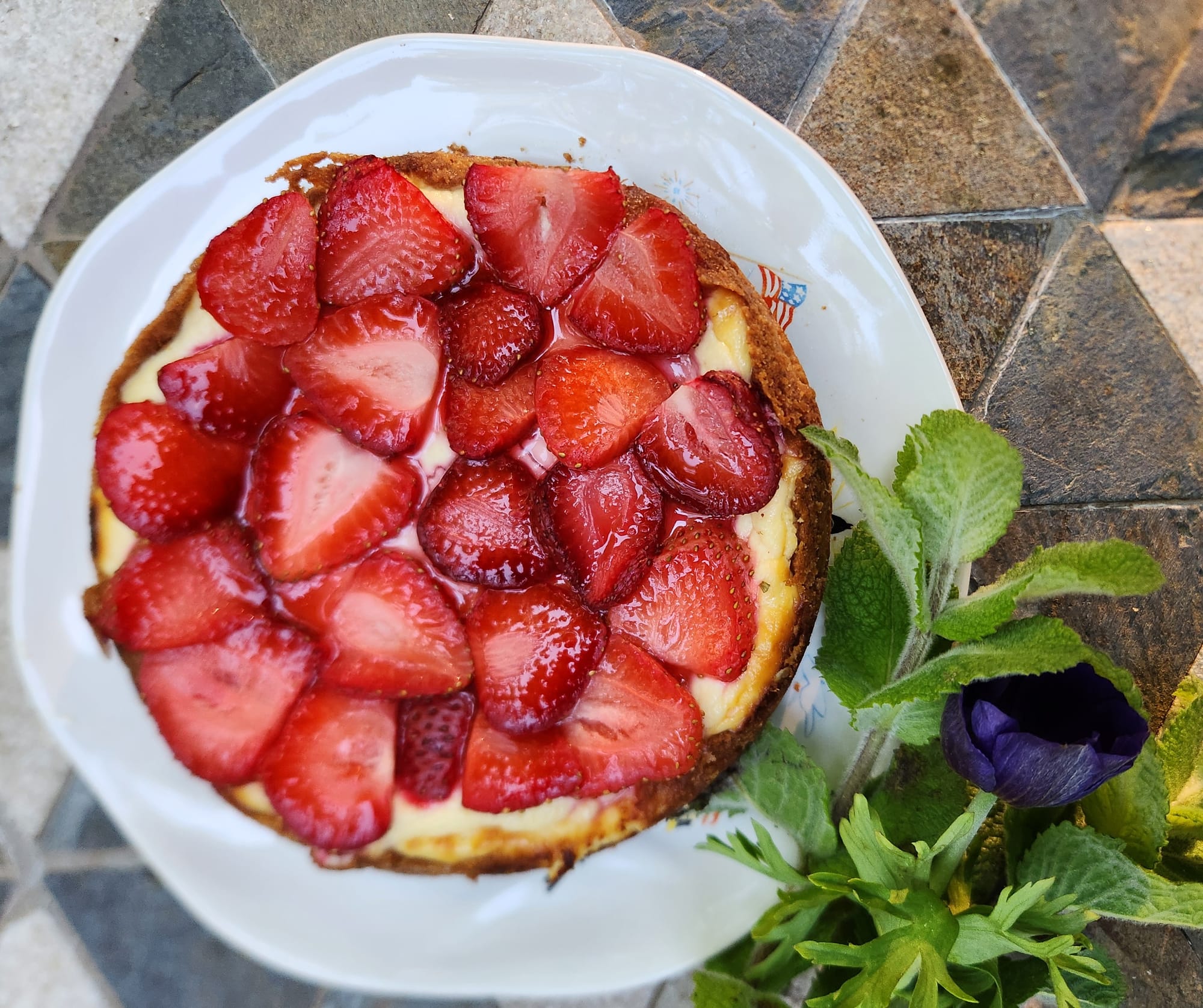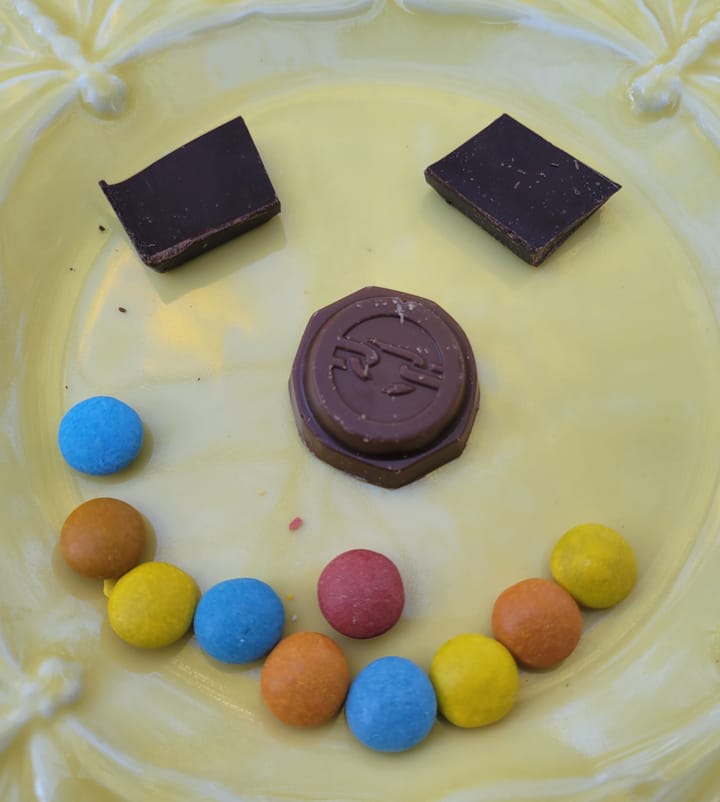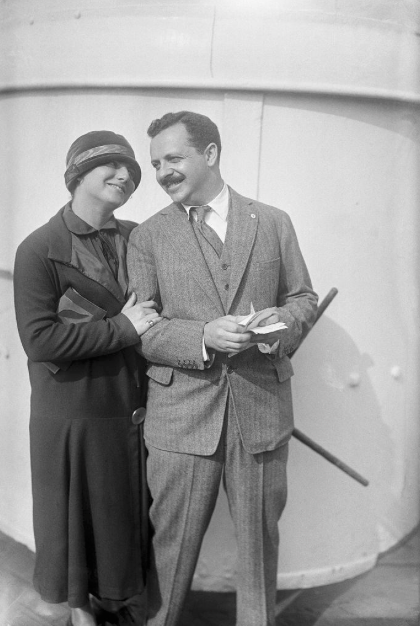On My Plate: Strawberries
The first modern garden-variety strawberry was bred in France in the 1750s through the pollination of male and female strawberry plants.

Local strawberries are making their annual appearance at Oxford’s Farmers Market, MOON Co-op Grocery and nearby pick-your-own farms. The current journalistic style is to open with an anecdote or human-interest story, but for me, the first sentence of this column says it all. The local strawberry season is short (and sweet), so boxes of them are happily filling our fridge.
I thought I would throw in a paragraph about the origin of the word strawberry. But the Oxford English Dictionary, the top etymology authority, says the origin is unknown. “Straw” is alleged by some to derive from a nineteenth-century English practice of laying them on straw, and anyway, it isn’t even a berry; rather, it’s the end of a plant stamen. The small spots on the strawberry surface are the actual fruit botanically.
The modern garden-variety strawberry was first bred in Brittany, France, in the 1750s, through the pollination of wild male strawberry plants brought back from Virginia and female ones brought back from Chile. The French still distinguish between cultivated strawberries (fraises) and wild “fraises du bois” (forest). If you are in France during the summer, it’s worth the effort to find the small sweet “fraises du bois.”
To serve guests, I’ve been baking zapekanka, a Ukrainian cake made with farmer cheese and topped with fruit. The cake serves a triple function for me. First, we ended up with quite a lot of farmer cheese in MOON Co-op Grocery. Second, the recipe calls for very little sugar. Third, zapekanka is better after spending a night in the fridge, making it ideal for preparing the day before serving to guests. And, of course, it honors Ukraine.

I do admit to tinkering with zapekanka recipes I find online. Melt 5 tablespoons of sweet butter, stir in 2 tablespoons of sugar, 1/4 teaspoon almond extract, 1/4 teaspoon vanilla extract, a pinch of sea salt and 2/3 cup whole wheat pastry flour to form a soft cookie-like dough.
Transfer the dough to a generously buttered 6-inch springform pan. Use your fingers to press the dough into the bottom and side of the pan to completely cover the bottom and lower two thirds of the side. Bake the shell for 12 minutes at 375 degrees.
Remove the shell from the oven and sprinkle 2 tablespoons of ground almonds all over the bottom of the shell. This helps prevent the shell from getting soggy when the filling is added.
Mix 2 cups of farmer cheese, 2 eggs, 1/4 cup sugar, 1/4 cup milk, 1/4 cup flour, 1 teaspoon vanilla extract and a pinch of sea salt, and pour into the shell. Bake for 30 minutes at 350 degrees. Slice around ½ pound of strawberries and tightly jam them on top of the cake. Bake for another 5 minutes.
The simplest way to enjoy our local strawberries is “Wimbledon” style. When I was a student in London, an English friend gave me two Centre Court tickets for opening day at Wimbledon. He had won the tickets in a lottery but had an unavoidable conflict that day.
I can’t remember who I saw play or the Royals I spotted. What I remember was going from Centre Court to a nearby tent to buy a bowl of strawberries and cream. American whipped cream is too thin, so I recommend local crème fraiche, which is the closest thing to British clotted cream that I find around here. Even if you’ve switched from tennis to pickleball, it’s the best way to consume local strawberries.
James Rubenstein is president of the Board of Directors for the Oxford Free Press and professor emeritus of geography at Miami University.




